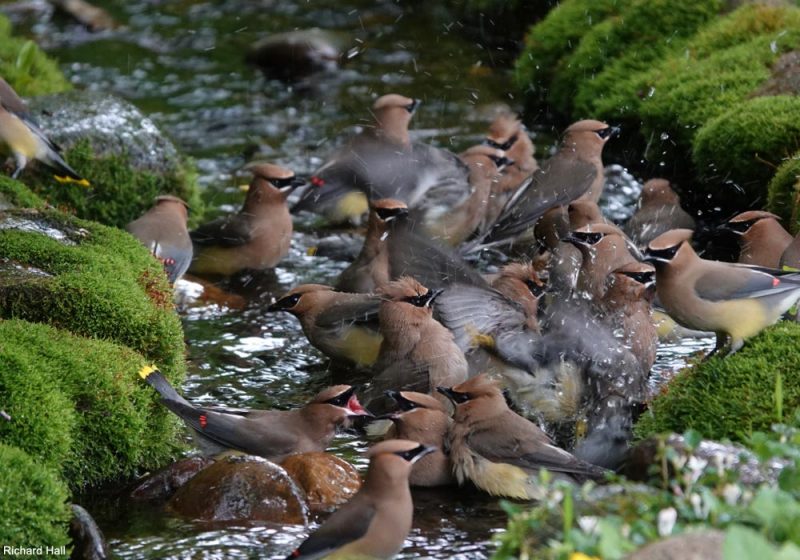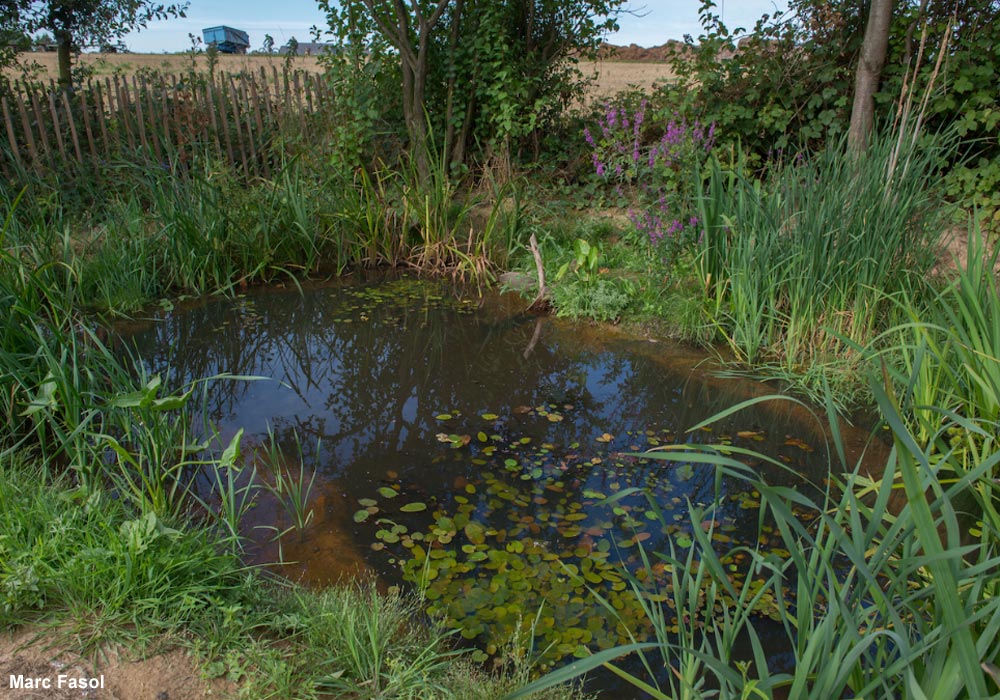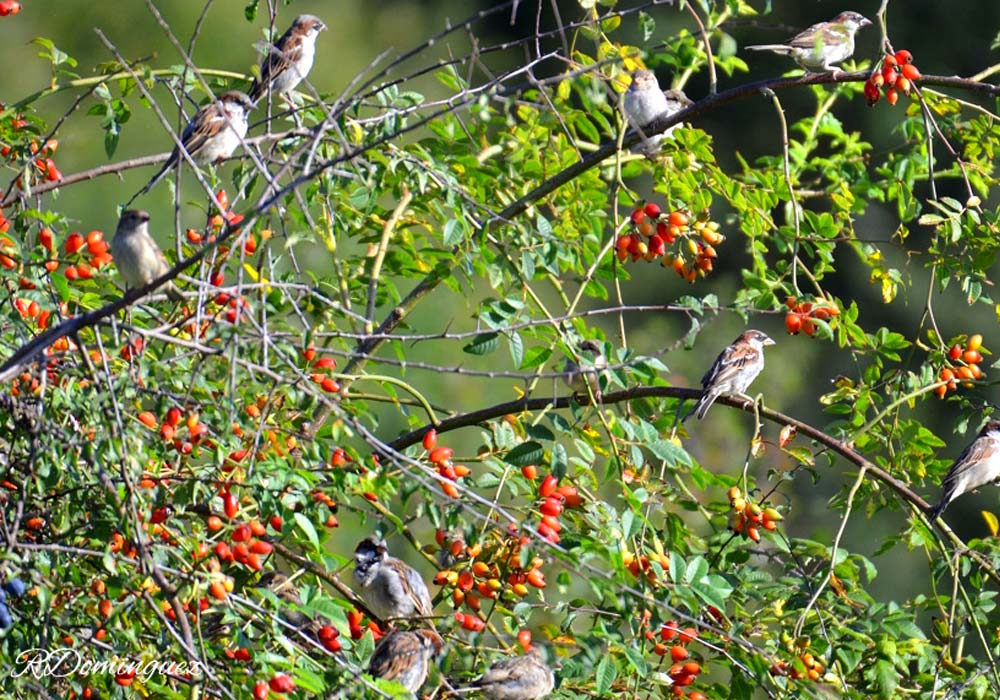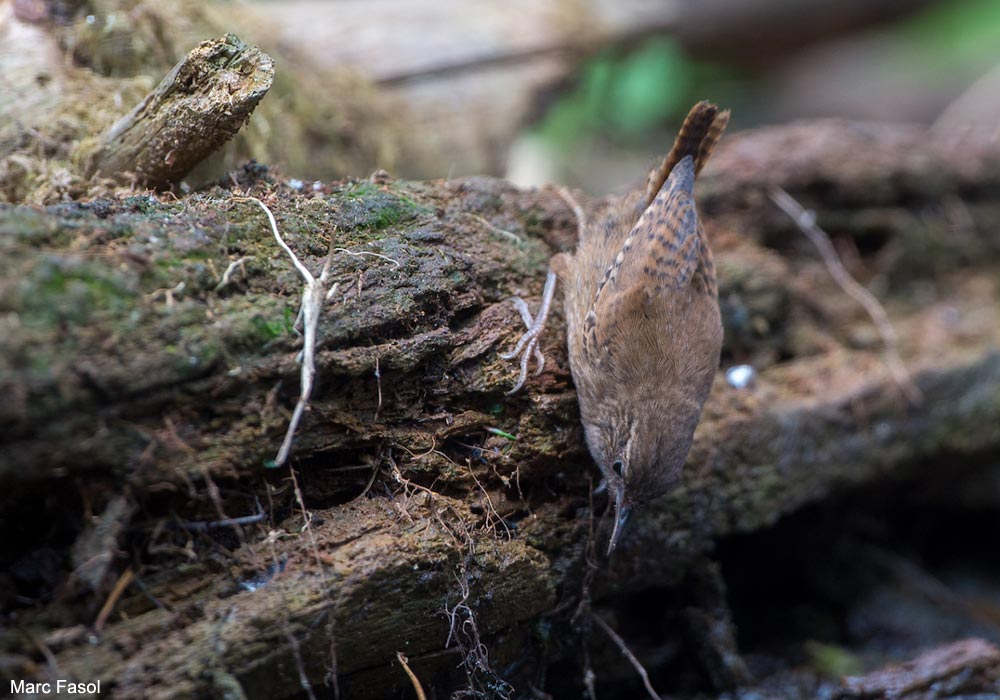Pratique | Conseils
Créer un ruisseau artificiel dans son jardin pour les oiseaux : des conseils et un exemple remarquable

Jaseurs d’Amérique (Bombycilla cedrorum) se baignant en 2022 dans le ruisseau artificiel créé par Richard Hall dans son jardin à Athens, en Géorgie (États-Unis).
Photographie : Richard Hall
Introduction
Pour attirer et accueillir les oiseaux dans son jardin, il est possible de mener plusieurs actions : les nourrir en hiver, semer ou planter des fleurs, des arbustes et des arbres leur fournissant le gîte et le couvert, ne pas faire de tailles au printemps, ne pas utiliser de pesticides, poser des nichoirs et leur fournir de l’eau, voire créer une mare. Si l’on ne veut pas avoir un plan d’eau libre dans son jardin, il existe une autre solution populaire en Amérique du Nord : créer un petit ruisseau artificiel alimenté par une pompe aspirant de l’eau dans un petit réservoir. Les oiseaux adoreront s’y baigner et y boire, l’eau sera oxygénée par son mouvement constant, et les moustiques n’y pondront pas.
Richard Hall (voir sa page Instagram), un biologiste vivant à Athens en Géorgie (États-Unis), a créé en 2009 un ruisseau artificiel qui est désormais utilisé par de nombreuses espèces d’oiseaux toute l’année, et notamment par une impressionnante diversité de parulines migratrices et nicheuses.
Après une énumération des points importants pour la réalisation d’un ruisseau artificiel, nous présentons celui que Richard a créé dans son jardin et la richesse de l’avifaune (109 espèces recensées jusqu’à présent) qui le visite tout au long de l’année. Nous le remercions pour nous avoir aidés à illustrer cet article.
Abstract
To attract and welcome birds into your garden, you can take several actions: feed them in winter, sow or plant flowers, shrubs and trees to provide them with food and shelter, do not prune them in spring, do not use pesticides, install nesting boxes and provide them with water, or even create a pond. If you do not want to have an open body of water in your garden, there is another popular solution in North America: create a small artificial stream fed by a powerful pump of water in a small reservoir. Birds will love to bathe and drink in it, the water will be oxygenated by its constant movement, and mosquitoes will not lay eggs there.
Richard Hall (visit his Instagram page), a biologist living in Athens, Georgia (USA), created in 2009 an artificial stream which is now used by many bird species all year-round, including an impressive diversity of migrating and breeding warblers.
After an enumeration of the important points for the realization of an artificial stream, we present the one that Richard created in his garden and the richness of the avifauna (109 species recorded until now) which visits it throughout the year. We thank him for helping us to illustrate this article.
Poursuivez la lecture de cet article, en vous abonnant dès maintenant !
Découvrez les Archives d’Ornithomedia.com
Pour seulement 10,00 €TTC/an (ou 6,00 € les 6 mois)
Profitez de plusieurs centaines d’articles en accès illimité et sans aucun engagement.
Compléments
Contact
Richard Hall – Site web : Hall Lab at UGA – Page Twitter : twitter.com/richhallecology – Page Instagram : www.instagram.com/richhallagram
Ouvrages recommandés
- Comment attirer les oiseaux sur son balcon ou dans son jardin de E.Gismondi, Catherine Baldisserri
- Nourrir et abriter les oiseaux de André Mauxion
- Nourrir les oiseaux dans sa main de Wiberg
Sources
- Archsine (2022). Aménagement de petit bassin de jardin – les points clés pour inviter le monde aquatique chez soi. archzine.fr
- Rustica. Dessiner un ruisseau : de la réalisation à l’entretien. www.rustica.fr







Aucun commentaire sur ce sujet
Participer à la discussion !